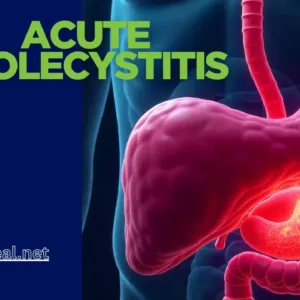An abscess is a painful, pus-filled infection typically caused by bacteria. This localized collection of pus can occur in various parts of the body, often presenting as a swollen, red, and tender area. Understanding the causes, symptoms, and treatments of abcesses can help in early recognition and effective management.
What is an Abscess?
An abscess is a pocket of pus that forms due to an infection. Pus is a thick fluid containing white blood cells, dead tissue, and bacteria. Abcesses can develop anywhere in the body but are most commonly found on the skin’s surface, in the armpits, or in the mouth.
Causes
An abscess is a localized collection of pus within tissues, organs, or confined spaces in the body, often causing swelling and inflammation. The primary causes of abcesses include:
- Bacterial Infection:
- Staphylococcus aureus: The most common bacteria responsible, especially methicillin-resistant Staphylococcus aureus (MRSA).
- Streptococcus species: Often found in skin and soft tissue abcesses.
- Anaerobic bacteria: Common in abcesses in deeper tissues and organs.
- Staphylococcus aureus: The most common bacteria responsible, especially methicillin-resistant Staphylococcus aureus (MRSA).
- Foreign Objects:
- Splinters, needles, or other foreign objects can introduce bacteria into the body, leading to an abscess.
- Blocked Glands or Ducts:
- Sweat glands, sebaceous glands, or ducts such as those in the breast or liver can become blocked, creating an environment where bacteria can thrive.
- Trauma or Injury:
- Cuts, puncture wounds, or other injuries can introduce bacteria into the body.
- Surgery or Medical Procedures:
- Post-surgical infections can lead to abcess formation if bacteria enter the surgical site.
- Weakened Immune System:
- Conditions like diabetes, cancer, or HIV/AIDS can reduce the body’s ability to fight off infections, increasing the risk of abcesses.
- Poor Hygiene:
- Inadequate cleaning of wounds or poor personal hygiene can lead to bacterial infections and subsequent abscess formation.
- Chronic Inflammatory Conditions:
- Diseases such as Crohn’s disease or ulcerative colitis can cause abcesses, particularly in the abdominal region.
- Dental Infections:
- Tooth decay, gum disease, or trauma to the teeth can result in dental abscesses.
Identifying and treating the underlying cause is essential for effective management and prevention of future abcesses. Treatment typically involves antibiotics and drainage of the abscess.
Symptoms
The symptoms of an abscess can vary depending on its location, but common signs and symptoms include:
- Localized Symptoms:
- Swelling: A noticeable lump or bump in the affected area.
- Pain: The area may be tender and painful to touch.
- Redness: The skin over the abcess may appear red and inflamed.
- Warmth: The affected area may feel warm to the touch.
- Pus: A pocket of pus may be visible, and in some cases, it may drain out.
- Skin changes: The skin over the abscess may become tight and shiny.
- Systemic Symptoms (more common with severe or untreated abcesses):
- Fever: A sign that the infection may be spreading.
- Chills: Accompanying the fever, indicating a more systemic infection.
- Malaise: A general feeling of being unwell.
- Fatigue: Feeling unusually tired or weak.
- Sweating: Night sweats or increased sweating.
- Loss of appetite: Reduced desire to eat.
- Symptoms Specific to Location:
- Skin abscess: Visible lump with possible drainage.
- Dental abscess: Severe toothache, sensitivity to hot and cold, swelling in the face or cheek.
- Internal abscess (e.g., abdominal): Pain in the affected area, nausea, vomiting, abdominal swelling, and difficulty breathing if the abscess is large.
If you suspect an abscess, especially if accompanied by systemic symptoms, it’s important to seek medical attention for proper diagnosis and treatment.
Psoas abscess
It is a collection of pus in the psoas muscle, often causing lower back or abdominal pain, fever, and difficulty walking. It can result from an infection spreading from nearby areas or through the bloodstream. Diagnosis typically involves imaging like a CT scan. Treatment includes antibiotics and drainage, either percutaneous or surgical. Early intervention is crucial to avoid complications such as sepsis.
Hepatic abscess
A hepatic abscess is a pus-filled infection in the liver, often causing fever, right upper abdominal pain, and jaundice. It is usually diagnosed with imaging like a CT scan and treated with antibiotics and drainage, either percutaneous or surgical. Early treatment is essential to prevent serious complications like sepsis.
Diagnosis
Diagnosing an abscess typically involves a combination of medical history, physical examination, and diagnostic tests. Here are the common steps in diagnosing an abcess:
- Medical History:
- The doctor will ask about symptoms, their duration, and any relevant medical history, including recent infections, surgeries, or injuries.
- Physical Examination:
- The affected area will be examined for signs of swelling, redness, warmth, and tenderness.
- In cases of visible abscesses, the doctor may inspect for pus and other signs of infection.
- Imaging Tests (for deeper or less accessible abcesses):
- Ultrasound: Helps identify fluid-filled cavities and guide drainage procedures.
- CT Scan (Computed Tomography): Provides detailed images of internal organs and can locate abcesses deep within the body.
- MRI (Magnetic Resonance Imaging): Offers detailed images, especially useful for abcesses in soft tissues and organs.
- X-ray: Sometimes used to identify abcesses associated with dental issues or to rule out other conditions.
- Laboratory Tests:
- Blood Tests: Can show signs of infection, such as elevated white blood cell counts and markers of inflammation.
- Pus Sample: If pus is draining or can be aspirated, it may be sent for culture and sensitivity testing to identify the causative bacteria and determine the most effective antibiotics.
- Aspiration and Biopsy:
- For some abcesses, a needle may be used to aspirate fluid from the abscess for analysis.
- A biopsy may be performed if there’s a need to rule out other conditions, such as tumors.
- Specialized Tests:
- Depending on the location and suspected cause, additional tests like endoscopy or colonoscopy might be used to examine internal organs and tissues.
Accurate diagnosis is essential to determine the appropriate treatment, which often includes antibiotics and drainage of the abcess.
Treatment of Abscesses
The treatment of an abscess depends on its size, location, and severity. Here are the common approaches to treating an abscess:
- Antibiotics:
- Prescribed to treat the underlying bacterial infection.
- Often used in conjunction with other treatments, especially for larger or more severe abcesses.
- Incision and Drainage:
- The primary treatment for abcesses, especially those that are large or do not respond to antibiotics alone.
- A small cut is made to allow the pus to drain out.
- The area is usually cleaned thoroughly, and sometimes a drainage tube is inserted to keep the abscess open and allow continuous drainage.
- This procedure is often performed under local anesthesia.
- Needle Aspiration:
- A less invasive procedure where a needle is used to draw out the pus.
- Often guided by ultrasound or CT scan for deeper abcesses.
- Warm Compresses:
- Applying warm, moist compresses to the affected area can help reduce pain and promote drainage in smaller, more superficial abscesses.
- Pain Relief:
- Over-the-counter pain relievers, such as ibuprofen or acetaminophen, can help manage pain and reduce inflammation.
- Surgical Intervention:
- In cases where abscesses are deep or in sensitive areas (e.g., brain, liver), more extensive surgical drainage may be required.
- Performed by specialists depending on the location of the abcess.
- Wound Care:
- Proper wound care following drainage is crucial to prevent recurrence.
- Keeping the area clean, changing dressings regularly, and monitoring for signs of infection.
- Treatment of Underlying Conditions:
- Addressing any underlying conditions or factors that contributed to the formation of the abscess, such as managing diabetes or improving hygiene practices.
Follow-up care is essential to ensure the abscess heals properly and to prevent complications or recurrence. If you suspect an abcess or have symptoms that do not improve with home care, seek medical attention promptly.
Smaller abscesses may be managed at home with proper care. This includes:
- Warm Compresses: Applying a warm, damp cloth to the abcess can help reduce pain and promote drainage.
- Proper Hygiene: Keeping the area clean and avoiding squeezing or popping the abcess can prevent further infection.
- Over-the-Counter Pain Relievers: Medications like ibuprofen or acetaminophen can help manage pain and reduce inflammation.
Prevention
Preventing abscesses involves taking steps to reduce the risk of infection:
- Maintain Good Hygiene: Regular handwashing and proper wound care can help prevent infections.
- Avoid Sharing Personal Items: Items like towels, razors, and clothing can spread bacteria.
- Stay Healthy: Maintaining a healthy immune system through a balanced diet, regular exercise, and adequate sleep can reduce the risk of infections.
When to Seek Medical Attention
While many abscesses can be managed at home, it is essential to seek medical attention if:
- The abscess is large or rapidly increasing in size.
- There is significant pain or fever.
- Red streaks are spreading from the abscess, indicating a potential spread of infection.
- The abcess does not improve with home care or recurs frequently.
Conclusion
Abscesses are common infections that can cause significant discomfort if left untreated. By understanding their causes, symptoms, and treatment options, you can take proactive steps to manage and prevent abcesses effectively. Always consult a healthcare professional for proper diagnosis and treatment if you suspect an abcess.
Disclaimer: This information provides a general overview of diagnosis, treatment, and medication related to alopecia areata. It is intended to assist in understanding potential options but is not comprehensive. This content is not a substitute for professional medical advice, diagnosis, or treatment. It does not cover all possible conditions, treatments, side effects, or risks specific to individual cases. For personalized medical advice, please consult a healthcare provider who can evaluate your unique circumstances. This information does not endorse or validate any specific treatments or medications.




